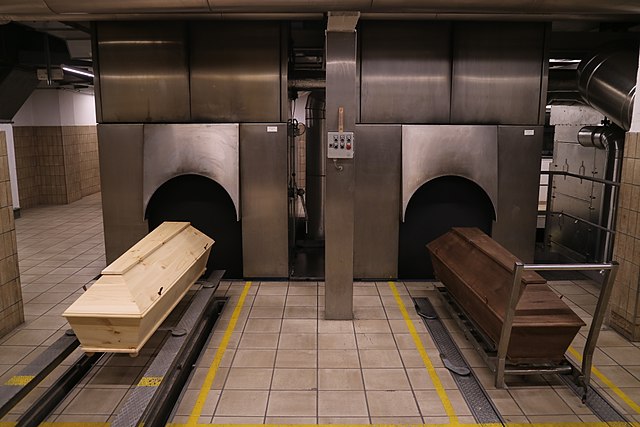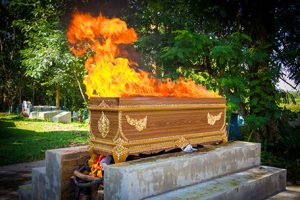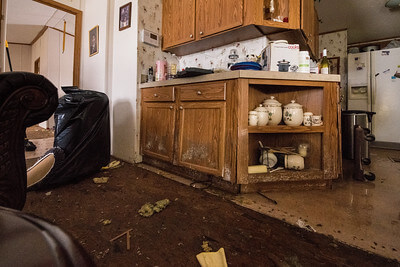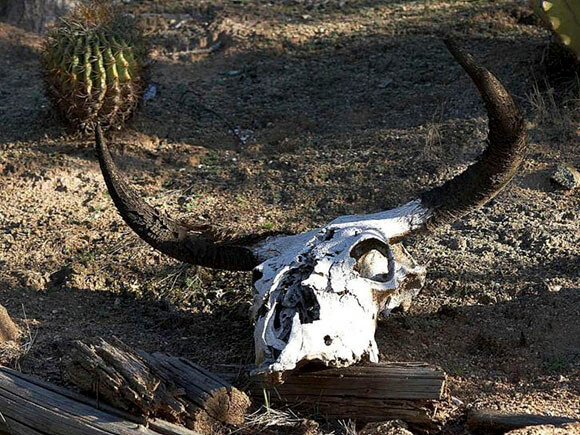What Happens to a Dead Body During Cremation?

Our culture in the US tends to avoid facts about death. We don’t like to think about it. But, the reality is, no one gets out of this life alive. As crime scene cleaners, we’re constantly exposed enough to know this for a fact.
We get many questions on death and dying, and we’d be happy to fill you in on the creepiest and most morbid facts about dead bodies and cremations. We’ll also answer all the questions you’ve been too shy to ask. Don’t worry, we won’t show any graphic pictures.
If you’d like to know the truth about what really happens during a cremation, this is the read for you.
Can a Dead Body Scream During Cremation?
We think this is an urban legend. We’ve witnessed many cremations and never heard a scream. But then again, cremation retorts aren’t silent either.
Now, bodies do make all kinds of gnarly noises. They sigh, groan, moan and fart. Sometimes they fart a lot. Sometimes they groan a lot. It’s disturbing when you’re working on the body of someone you knew because groans come through their voice box, and it sounds like their real voice. So it’s not impossible that a body would make noise.
Can Dead Bodies Sit Up?
We’ve never seen this happen either. But it could.
During the decomposition process, muscles relax, stiffen and relax again. The bacteria in your gut that helps with digestion continues digesting and releasing gases, which tend to bloat a body. These things are all affected by ambient temperature, so a body that was found frozen and stored in a cooler might go through a few contortions as it warms.
What Happens to the Body, Bones, Teeth and Skull During Cremation?
Cremation retorts reach temperatures ranging from 1400 to 1800 degrees (F). They stay that hot for hours. All the soft parts — guts, tendons, muscle tissue — turn to a fine yellow-gray ash. Most of the smaller bones turn to ash, too. But some bits of bone — usually vertebrae, skull and teeth — will need a little extra help.
After the retort cools, the remains are carefully and respectfully swept out. Any remaining teeth / bones are put in a “processor,” like an industrial-strength kitchen blender. They are processed down to a fine powder.
Does Cremation Hurt the Body?
No. Pain is a sensation experienced by a living brain. By the time we reach the cremation chamber, our brains and nervous system have gone dark. The nerves aren’t sending signals to the brain, and the brain isn’t awake to receive them, either.
Are Organs Removed Before a Cremation?
Usually, no. The exceptions are a body that’s visiting the coroner for an autopsy and a body harvested for organ donation.
- During an autopsy, many organs are removed, studied, logged and returned to the body (in any random order).
- The body is then stitched up.
- When a cadaver is harvested for organ donation, many parts are removed and transported to the receiving party.
- And your funeral director does their best to tidy a body up and make it look whole again.
Aside from organs, the crematory will remove pacemakers from a body because they can cause explosions and damage expensive cremation retorts. Titanium bone replacements may be removed, too.
Is the Casket Burned with the Body?
Sometimes, but not often. Caskets are expensive. So most bodies enter the cremation retort in an alternative container, a fancy term for a heavy-duty cardboard box. Some states allow bodies to be cremated in a body bag.
- Cremation chambers are very capable of incinerating a wooden casket at 1800 degrees.
- But most families feel that is a waste of money since an alternative container might cost a few hundred bucks, while a casket might cost a few grand.
Rental caskets have become more popular in recent years for this reason. The funeral home will set up a re-usable exterior and prepare the body for viewing in it. After the service, the interior and lining are cremated with the body. The exterior is cleaned and prepared for the next body.
Finally, know there is a federal law — the FTC Funeral Rule — which prevents funeral homes from requiring a casket for cremation. In other words, a body bag or alternative container might be required for cremation, but never a casket.
We hope you’ve enjoyed our discussion of the morbid facts about cremation. It was therapeutic for us to write it, although we hope you won’t be in any of these situations soon.






